Uncovering UK History on Walking Holidays
By James Taylor
There is Nothing Like Being There
There are some beautiful history books out there, some stunning documentaries and artwork that can evoke a sense of wonder, terror or nostalgia, but there is nothing that exhilarates the history buff quite as vividly as actually setting foot on the places where historical events actually happened.
Walking is perhaps the best way to take in historical landscapes and sites because, for most of history, that is the way most people would have experienced them, up close and personal.
If you want to ponder the world of Stone Age migrants; imagine what it would have been like to be a Roman soldier from the far south, posted on a cold wall at the Scottish borders; or plod the regular route of a towpath worker along the Thames, the best way to experience it is on foot.
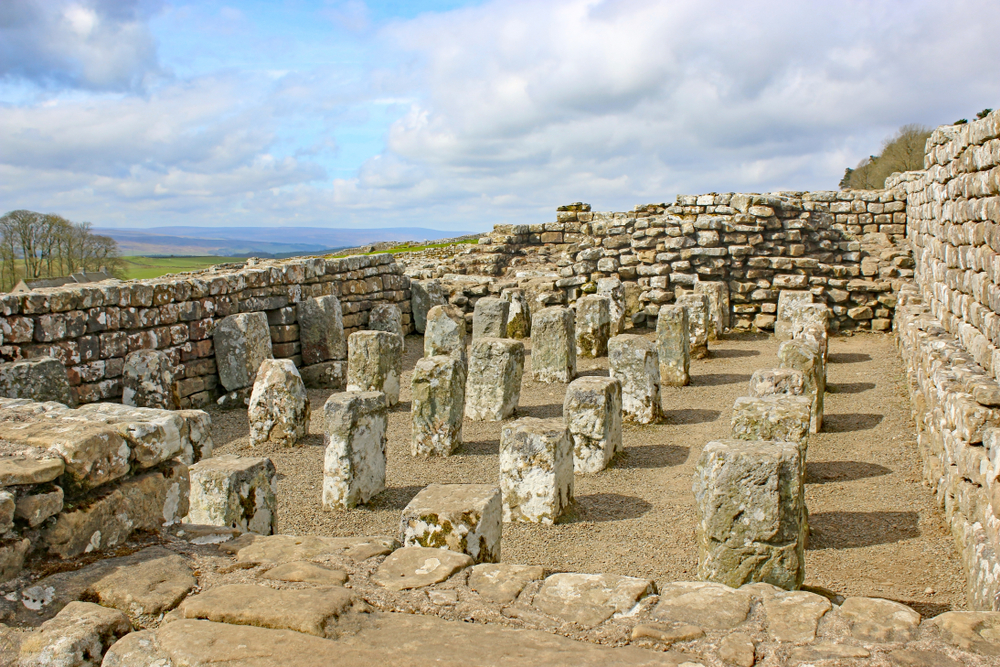
Area, or Era?
There are a lot of walks based on particular areas of natural beauty, and beautiful scenery is often the main consideration for people choosing where to walk.
Many routes have a variety of historical points of interest which span wide-ranging periods of time.
The walks that are right for you are best chosen with a combination of factors, including the location you wish to walk, route difficulty, landscape and scenery; as well as the types of historical sites to be found along the route.
Let’s have a look at some of the walks that will have history lovers lacing up their boots.
Ancient Artefacts
Civilisations and cultures have inhabited the UK for millennia and as each has grown and passed, they have left their mark on the landscape. Where people have lived their lives, there are interesting sites and artefacts left behind.
If your interest goes into prehistory, you can find stone tools, metal objects and evidence of the types of dwellings they built. But for hikers there is another artefact just as exciting.
We have the opportunity to connect with those ancient ancestors by travelling on some of the tracks that were in regular use in prehistoric times.
For enthusiasts of the Bronze Age there are excellent opportunities to get up close to artefacts and other evidence of those ancient lives. The Peddars Way is a Bronze Age road that was later used by the Romans and then 15th century pilgrims, and you can still use it today.
The way is not difficult but it is no less worthwhile than other, more challenging routes. It passes through some beautiful tracks and green lanes, past archaeological sites and several wildlife reserves.
The South Downs Way route follows several ancient tracks, formed by early settlers as they preferred the more solid high ground to the Weald below, which would then have been swampland. These tracks have since been used by Bronze Age traders and Romans, and now modern day long-distance hikers.
The South Downs Way takes walkers over these ancient tracks, linked together into an easy, clearly-marked walk, suitable for beginners and enthusiasts alike.
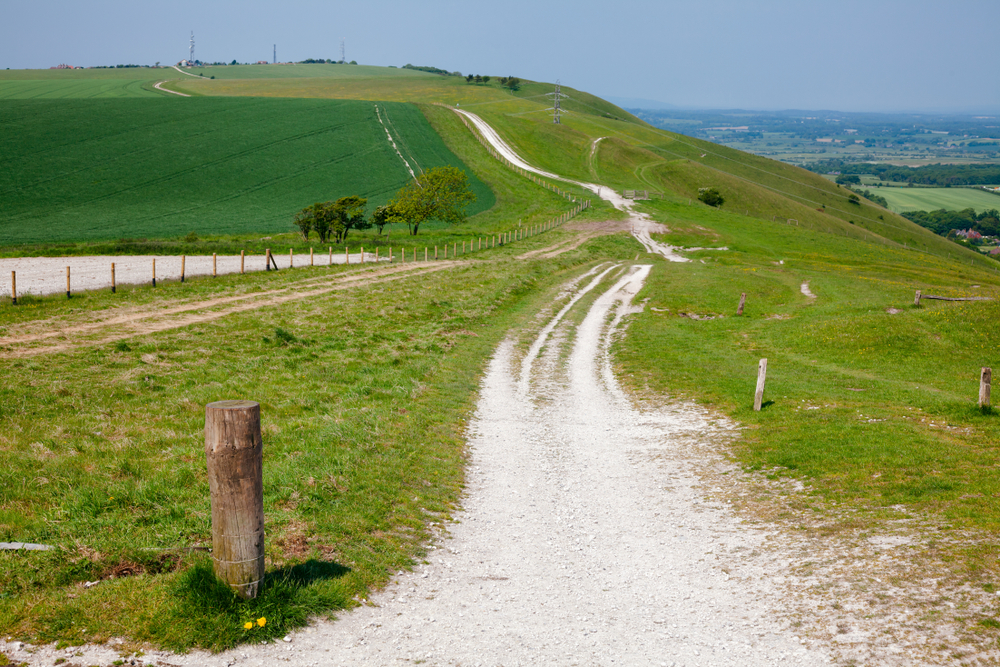
The Cotswold Way follows the escarpment edge of the Cotswolds Area of Natural Beauty, with panoramic views as the trail rolls gently over the Wolds.
Along the trail there are opportunities to visit Neolithic Long Barrows – chambered burial sites built on elevated ground.
Roman Remains
Walkers in England are among the luckiest in the world, especially if they happen also to be Roman history enthusiasts.
The British Isles marks the northern extreme of the Roman Empire at its height, and its collapse and withdrawal nonetheless left behind the mark of these driven conquerors.
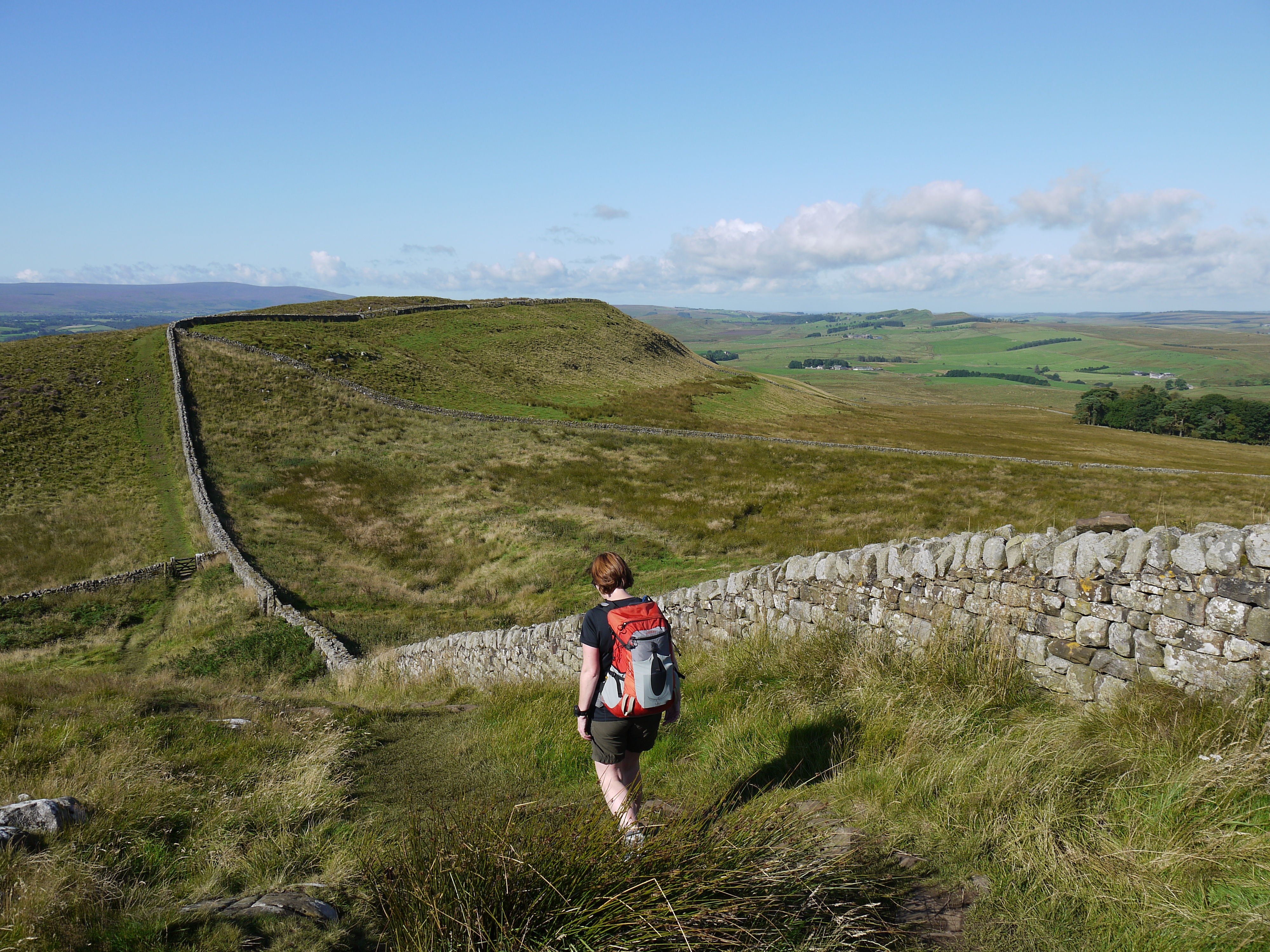
Hadrian’s Wall, among the most extensive Roman remains in the world, stretches from coast to coast across northern England.
Whether you walk a part of it or the whole thing, you will revel in the fact that you are placing your feet over the same footsteps of so many Roman soldiers who patrolled nearly 2000 years ago.
The wall itself is an excellent artefact to see but dotted along it are the milecastles, giving walkers the opportunity to see ruins in various states of repair.
Stop at interpretive centres like Birdoswald Roman Fort and Vindolanda to take in information about life on the Roman frontier, then resume your trek to enjoy the peace and tranquillity of the more remote portions of the wall.
Local farmhouses, barns, even castles and priories were built from stones ‘robbed’ from the wall over the centuries since the Romans abandoned the area. These buildings add to the charm and depth of history offered by this route in the sections where the Wall is no longer visible.
Medieval Masonry
Most medieval towns in turn become modern ones so you might think that walking holidays aren’t a great way to see sites from the period, but they are!
Most routes take walkers through villages and country estates along the way and many of these still harbour relics of medieval times, some as dilapidated ruins and others that still function as part of daily life in the communities that have grown up around them.
The St Cuthbert’s Way route is a tribute to one of the most important medieval saints of northern England, starting in his childhood home town of Melrose and making its way east to Lindisfarne, on Holy Island.
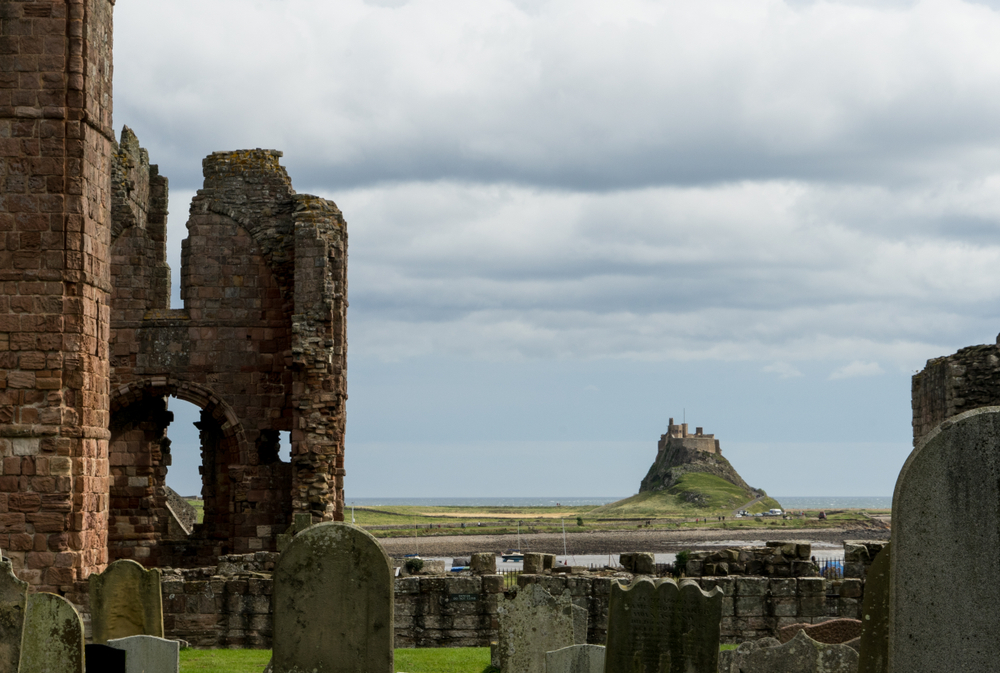
Walkers will see beautiful scenery along the River Tweed, through the Cheviot Hills, and will bask in fresh air and sounds of the countryside as they follow part of the ancient Roman road of Dere Street.
Along the way, interesting historic sites like Dryburgh Abbey and St Cuthbert’s Cave will pique your imagination and give you plenty to talk about over meals and drinks in the evenings as you visit pleasant market towns such as Kirk Yetholm and Wooler.
The priory on Lindisfarne was established in the 7th century as a remote centre for prayer and ecclesiastical work in what was then the Kingdom of Northumbria. It survived Viking invasions and the Norman conquest of England, yet today it lies in ruins as stones from the priory were used in the construction of Lindisfarne Castle.
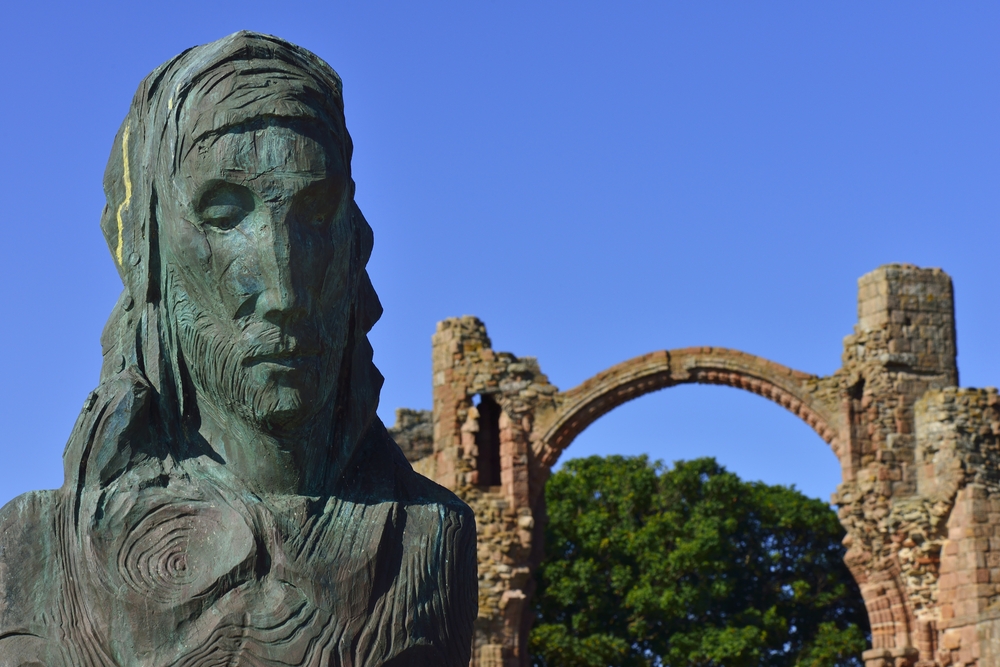
The Peddars Way runs through Castle Acre and passes the Bailey Gate, a structure from the 1200s that still spans the road into the village today. Castle Acre Priory is another noteworthy site on this route and dates back to 1090.
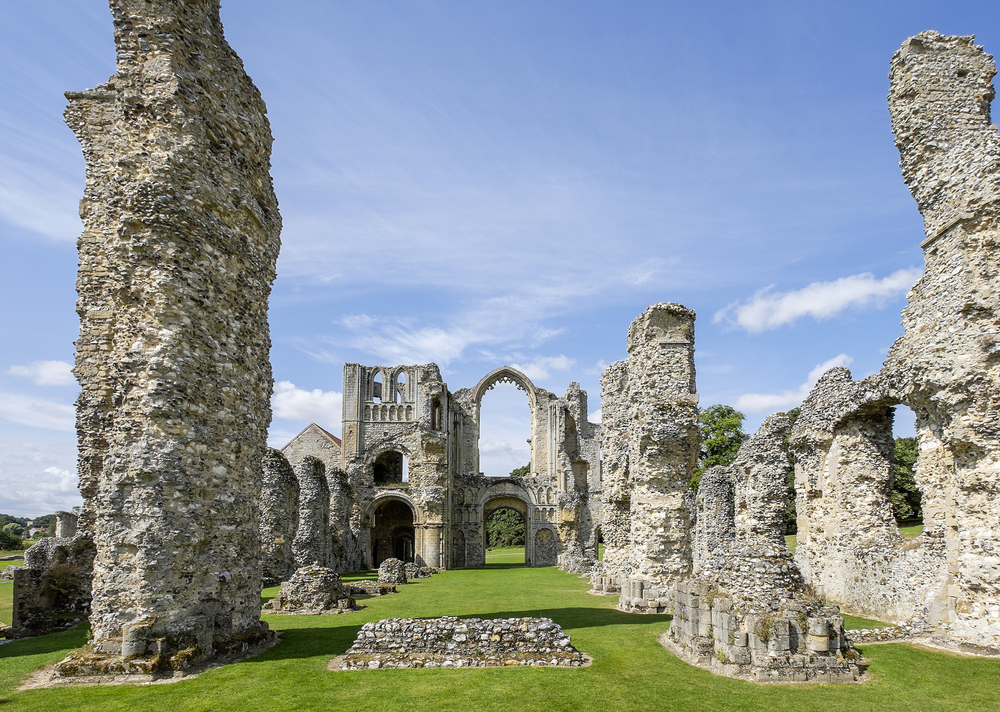
The ruins are beautiful even in their current state, with most of the walls and all of the roof gone, but even more importantly they stir up a sense of how stunning this site would have been in its day.
There is a recreated herb garden there and an informative presentation maintained by English Heritage.
One of the most beautiful historical sites, set in starkly beautiful surroundings, is the medieval Tintagel Castle on Cornwall’s north coast.
The North Cornwall section of the South West Coast Path takes in this historical gem as well as several other interesting sites including historic fishing villages, like the picturesque St Ives or Clovelly, clinging to the cliffs with steeply cobbled streets where the only forms of transport you’ll find are donkeys and traditional sledges (although technically it’s in Devon).
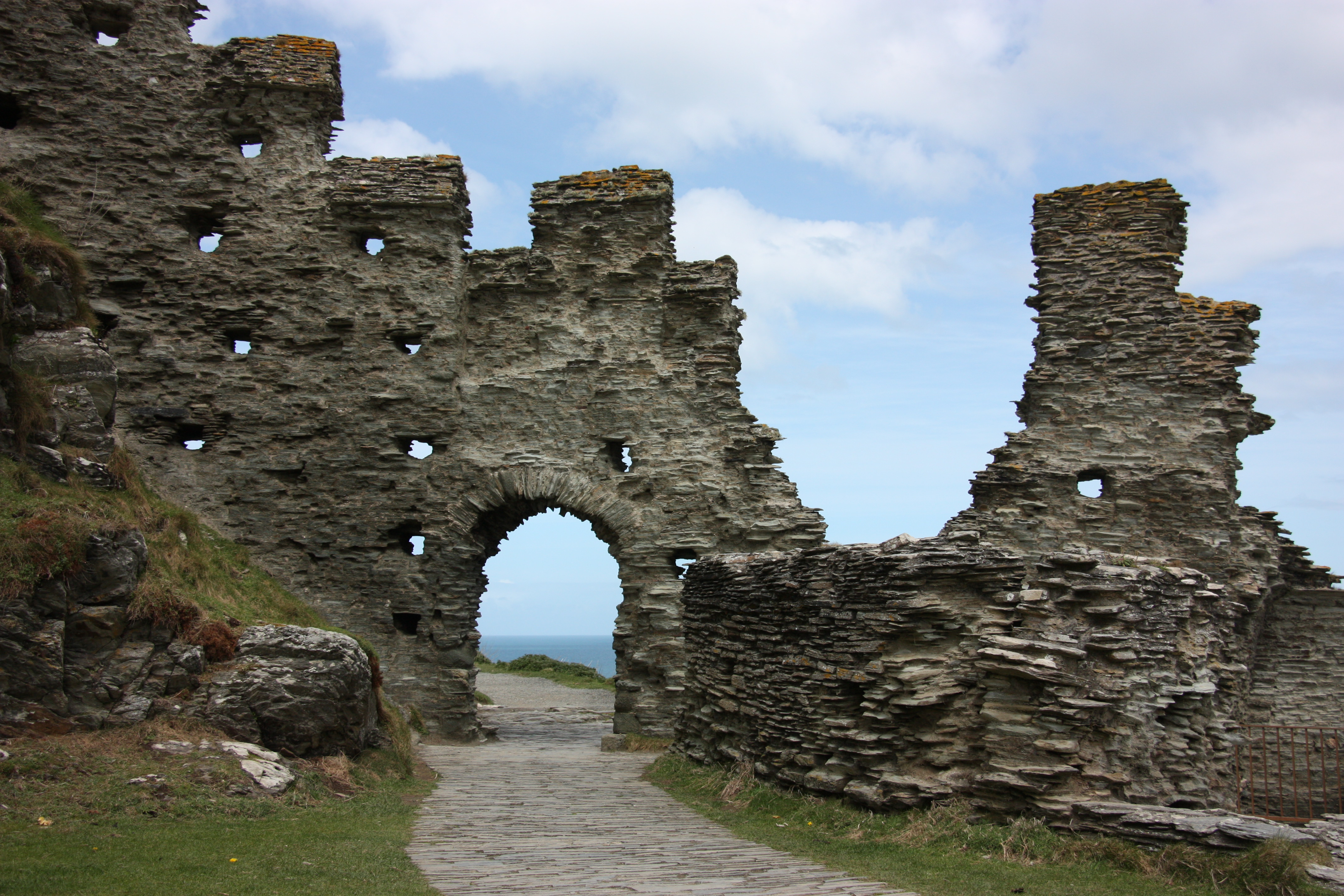
The Pembrokeshire Coast Path, which skirts around the southwestern coast of Wales, includes such excellent sites as St David’s Cathedral and Bishop’s Palace, St Dogmaels Abbey and Manorbier Castle.
Perhaps the most significant site is Pembroke Castle – birthplace of Henry VII, first monarch of the House of Tudor, who landed in Pembrokeshire to rally support in the Wars of the Roses. The castle fell into decay following the Siege of Pembroke, when Oliver Cromwell ordered it to be destroyed, but was extensively restored in the 1920s.
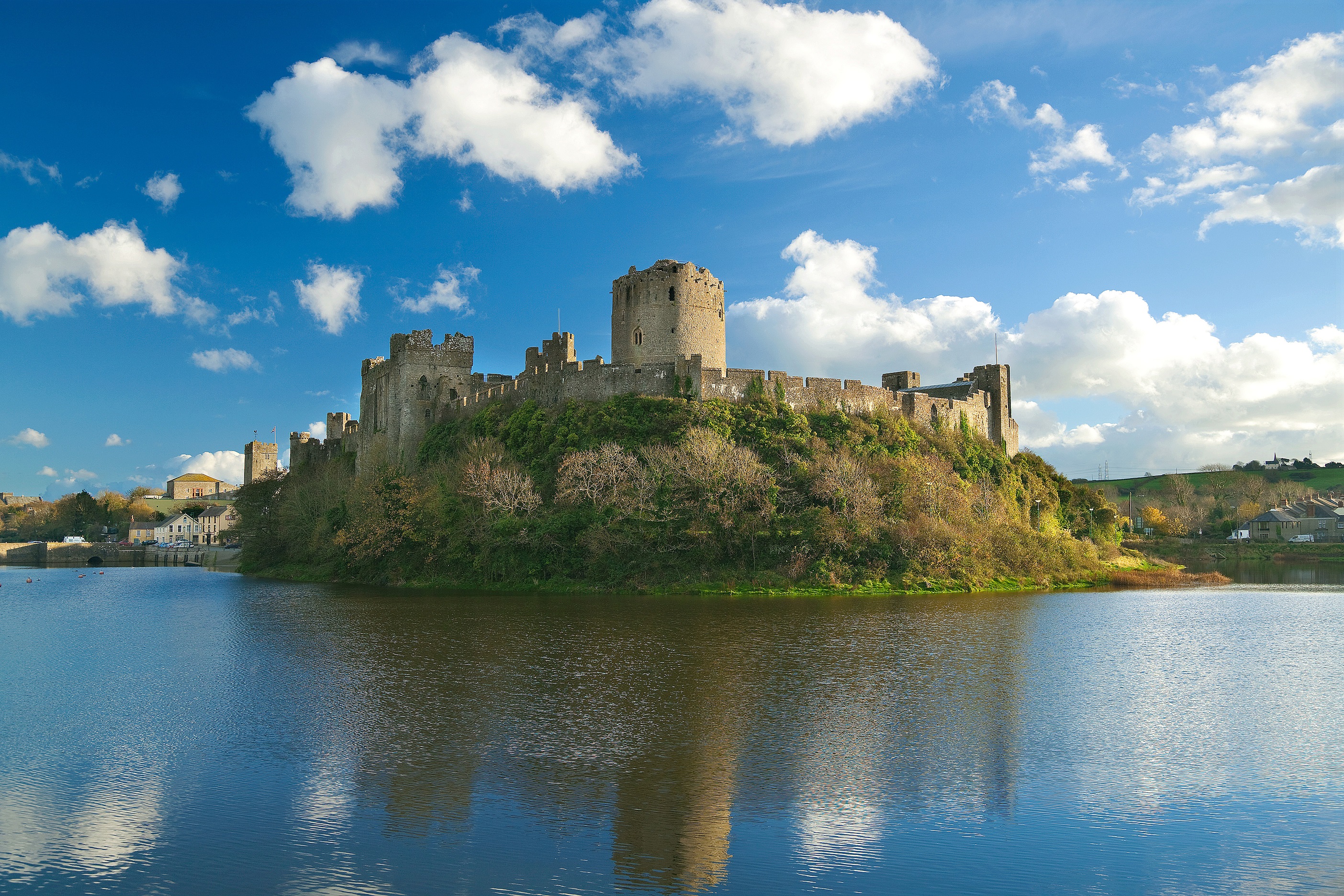
17th Century
The modern period has a greater romanticism than the medieval period and we get a more insightful look into the characters who made their marks at the time. Many long-distance walks are in tribute to the heroics or life’s work of such notable characters.
Lady Anne Clifford (countess of Pembroke, Dorset and Montgomery) spent 26 years, and a great deal of money, restoring her family’s castles, as well as churches and monuments, many of which are highlights along this picturesque walk, Lady Anne’s Way.
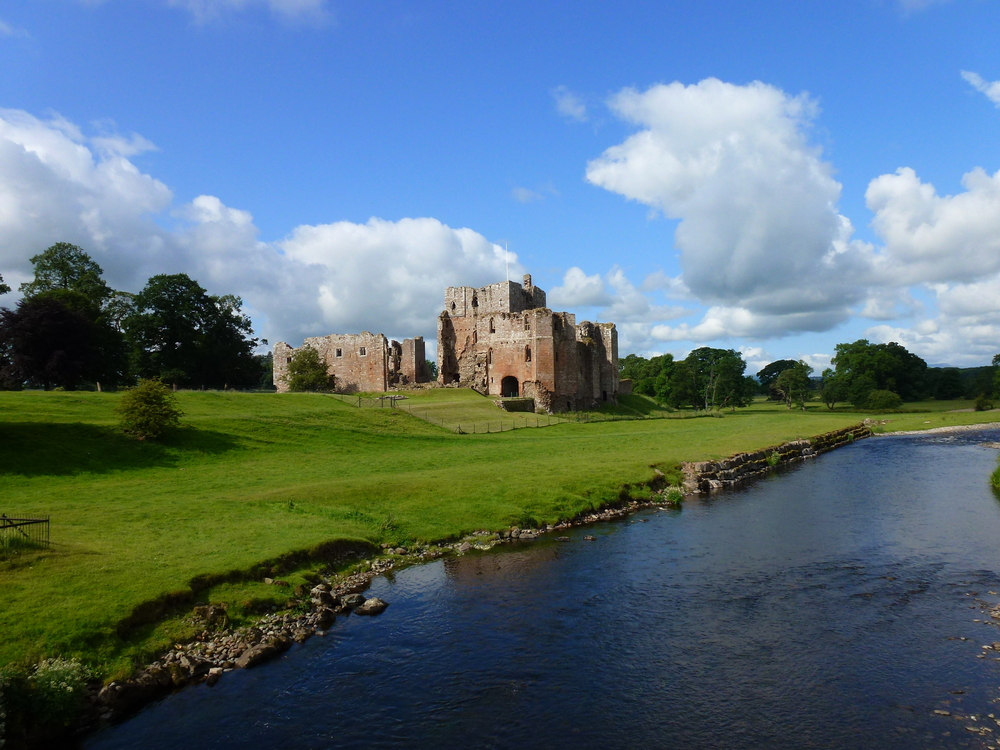
Skipton Castle, Pendragon Castle, Brough Castle, Appleby Castle and Brougham Castle, as well as other sites such as the Countess Pillar and Appleby Almshouse are all along the route.
The trail itself has varied terrain that is interesting even without the historical significance so the two together make this a truly excellent walk for keen historians with a love of the outdoors.
The Rob Roy Way follows historic paths with glorious scenery, visiting many places strongly linked with Rob Roy MacGregor, Scotland’s legendary outlaw born in the late 17th century.
At a young age, Rob Roy joined the Jacobite rebellion along with many Highland clansmen. Following the Jacobite rising of 1689, the MacGregor family name was effectively banned from legal use meaning it was difficult for Rob Roy to establish a life as a cattle trader.
Bankrupted in the early 18th century, Rob Roy caused havoc for government forces, raiding, evading capture and escaping imprisonment several times, until his submission to King George I allowed him to live a decade of relative peace before dying comfortably in his own bed.
While this trail is shorter on significant historical sites than other mentioned trails, you can’t help but feel inspired when following in the footsteps of this enigmatic character through some of the most wonderful countryside in the UK.
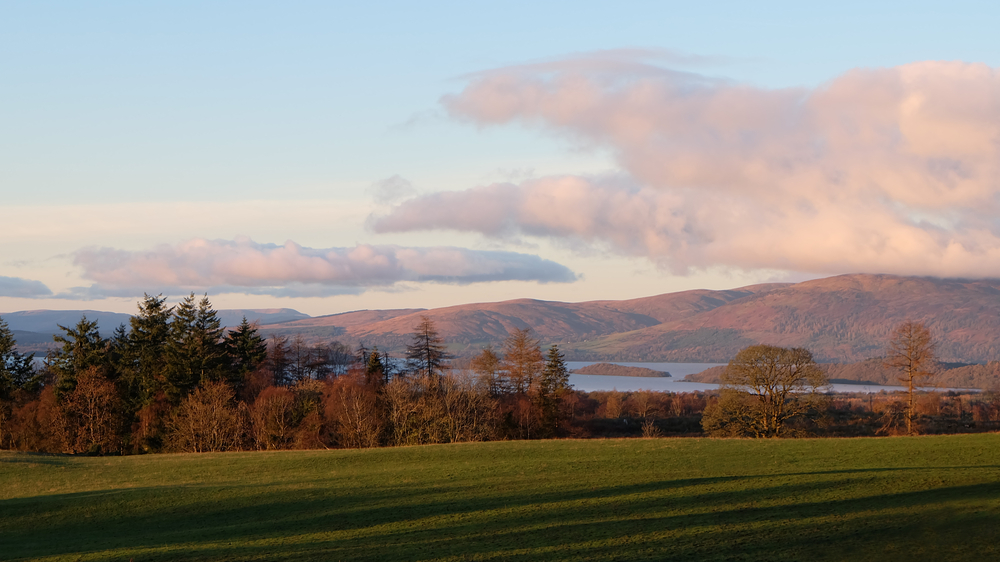
Industrial In-roads
The story of the UK is heavily underpinned by the rise of industry and modern development. Industrious, innovative and driven people from the past changed expectations, lifestyles and even the very landscape to see their industrial visions come to fruition.
The Thames Path gives walkers an excellent view of the everyday setting of traders and coal haulers that moved up and down the Thames, pulling barges against the current using horses along the tow path, which is now an excellent walking trail from Kemble, in the Cotswolds, to London.
This riverside walk takes in more than just industrial history. It passes historical sites dating from the Stone Age to today, including highlights such as Windsor Castle and the many sites around Oxford – but there is no escaping the constant remnants of the industries that trekked up and down the river over the years and shaped the communities around it.
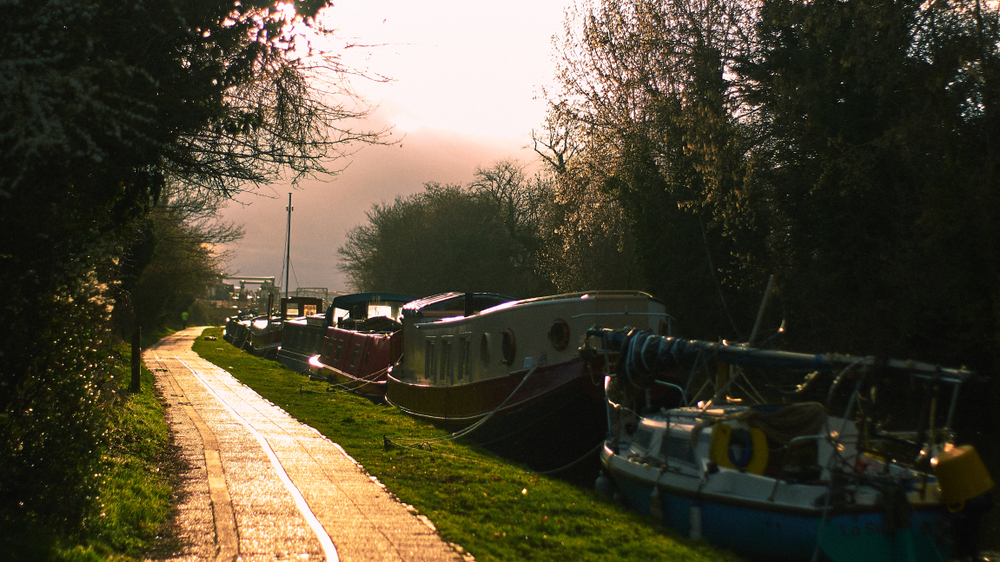
Further north in the Lake District, walkers interested in industrial development may like to experience the Inn Way to the Lake District route.
The walk combines stunning natural scenery with mining heritage near Coniston, where you can board the steam yacht Gondola. Even though the vessel dates from a slightly later period (1859), it is nonetheless in keeping with the spirit and feel of the industrial era. Visitors can take in stunning Lake District views from aboard a solid piece of historical engineering.
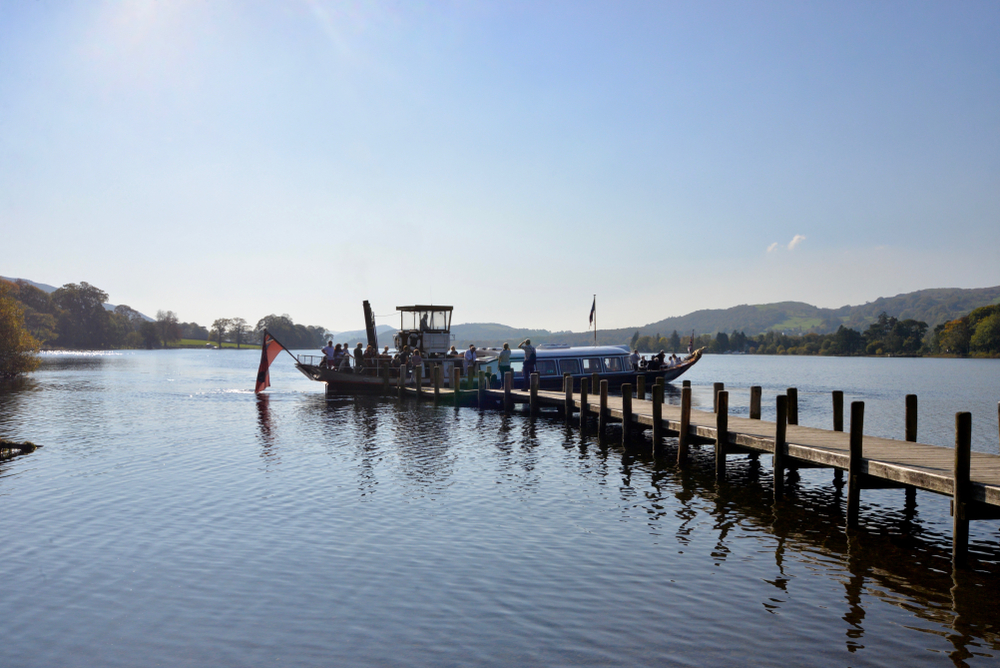
If you’re interested in a wider range of historical interest, the Fife Coastal Path will take you past architectural examples from the last eight hundred years, each of them worth seeing on their own merit.
Add these together with the amazing coastal views, scenes of seals, dolphins and other wildlife, and it’s not hard to understand the popularity of this route.

Literary Loves
History and literature have always been closely-aligned, and dramatic landscapes have often inspired truly great literary works.
The writings of our ancestors give us glimpses into their minds and thoughts, and favourite authors gain historical importance in their own rights.
It can be a real pleasure to stand amid the landscape where our favourite writers penned some of their greatest achievements.
The Tour of the Lake District route passes through the village of Grasmere, one of Cumbria’s most popular villages thanks to the presence of Dove Cottage, William Wordsworth’s home.
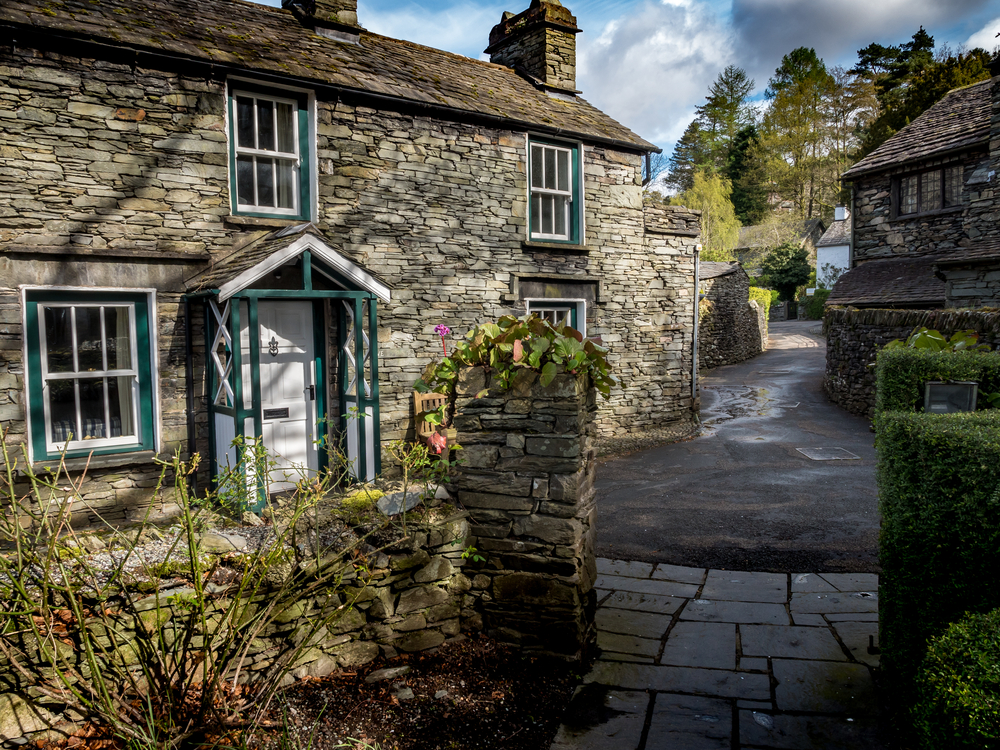
The route also visits the popular town of Keswick, which has been home to the likes of Southey and Coleridge, and many locations which inspired Beatrix Potter throughout her early life and literary career. Walkers can enjoy the Lake District’s plentiful shops and restaurants, or take a break in a café while discussing some of these famous writers’ works.
The Herriot Way is, as the name indicates, a walk that takes in some of the favourite spots of famed veterinarian and author Alf Wight, better known as James Herriot.
You’ll see beautiful natural locations, historical Bolton Castle and the market town of Hawes, as well as all manner of creatures great and small.
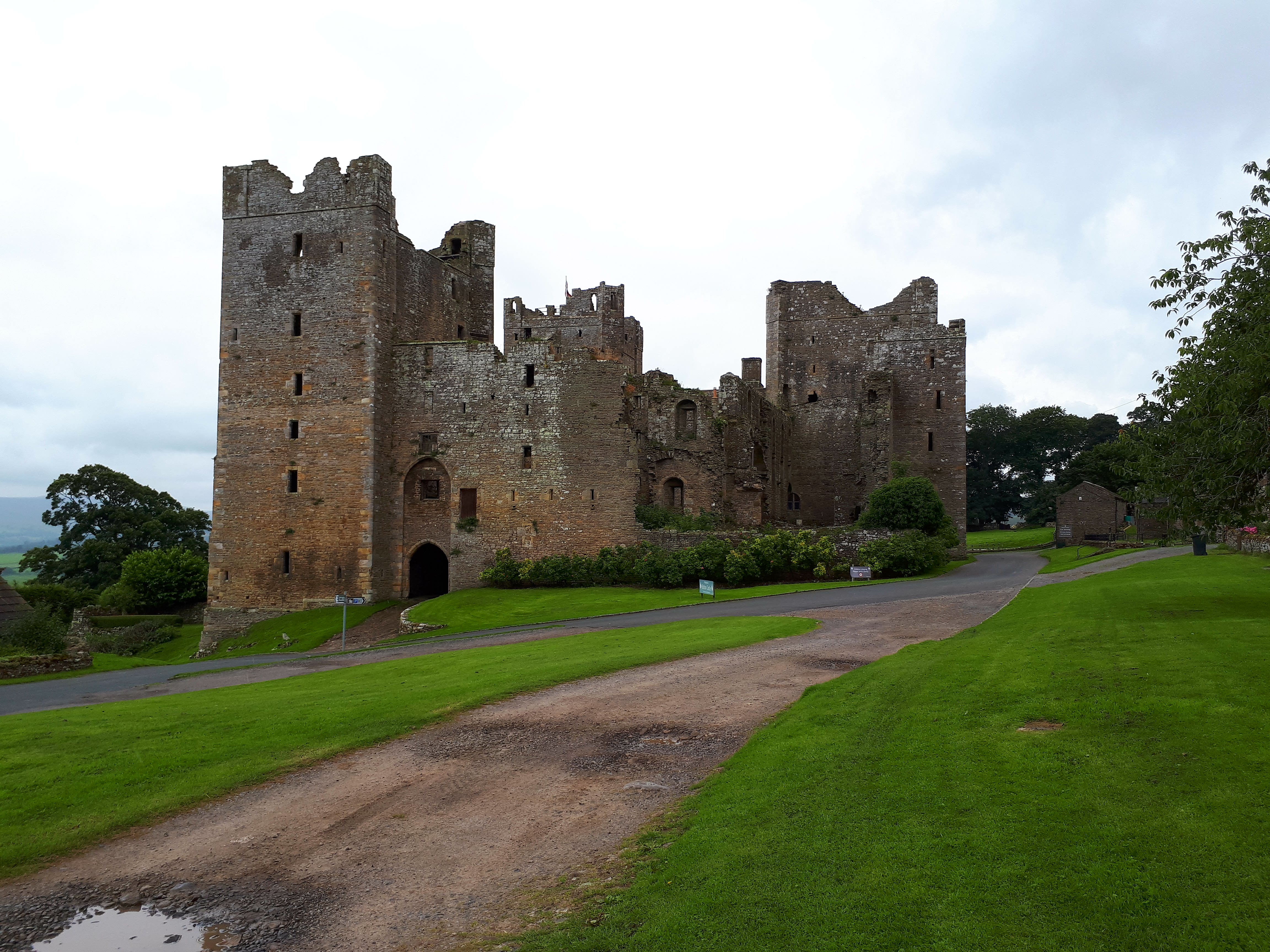
The Cotswolds Area of Natural Beauty has a wealth of literary connections and the Cotswold Way walking trail has many highlights.
The trail starts in Chipping Campden, where T.S. Eliot is known to have been a regular visitor, finding inspiration while rambling across the Cotswold hills and running from cows. Look carefully around the village and you might find the blue plaque marking Graham Greene’s house.
The trail runs through Stanway and you pass by Stanway House, where J.M. Barry is known to have spent his summers in the 1920s. During this period he funded the cricket pavilion and even founded an amateur cricket team with friends such as literary heavyweights Arthur Conan Doyle, H.G. Wells and P.G. Wodehouse.
Perhaps the greatest connection with literature is the end point of the trail, the city of Bath, which was once home to Jane Austen and inspiration for some of her novels. The city has embraced this connection and there are many opportunities to learn about her life and works or get a taste of Georgian Bath during the many festivals and events.
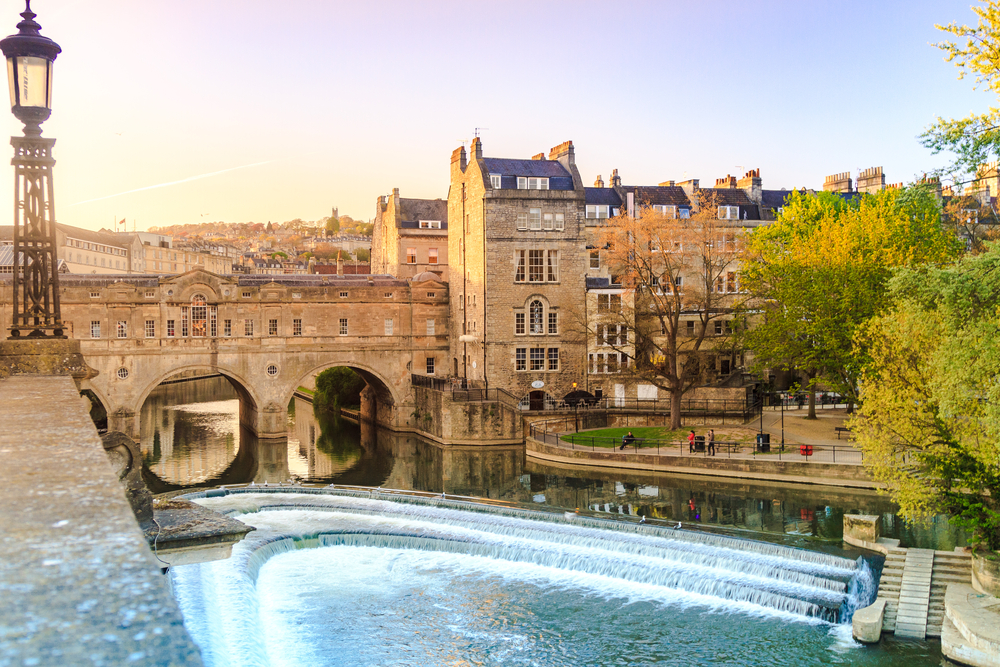
In the south of England, the North Devon section of the South West Coast Path follows the route taken by Tarka the Otter in the writings of Henry Williamson.
This area is known for rich bird life and stunning views of the Bristol Channel.
Trekking Trailblazer
Some walking trails have an intangible air of history even in the absence of specifically significant historical sites and artefacts. These trails will have formed from centuries of use by local communities and people working the land, walking these routes can also give you a glimpse into how people lived their lives in times gone by.
In the world of walking holidays, the West Highland Way takes a special place as the first long distance footpath established in Scotland.
Running from Milngavie, just outside of Glasgow, to Fort William and Ben Nevis, it will immerse you in breath-taking Scottish scenery as you tread the same paths as the pilgrims, cattle drovers and soldiers of the past.
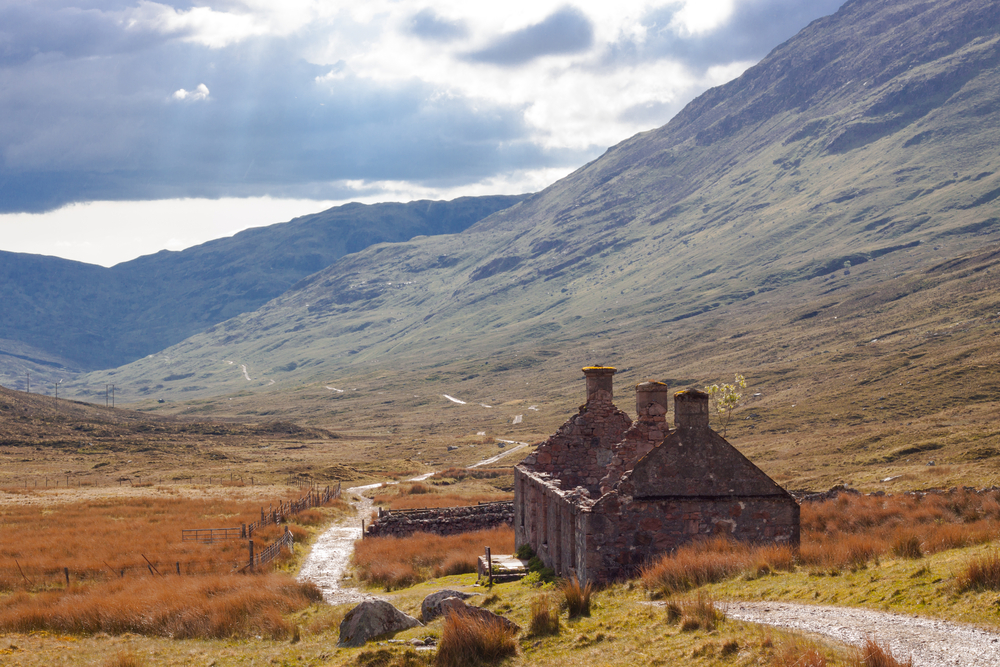
The title of longest National Trail footpath in the UK, however, goes to the South West Coast Path, at 630 miles.
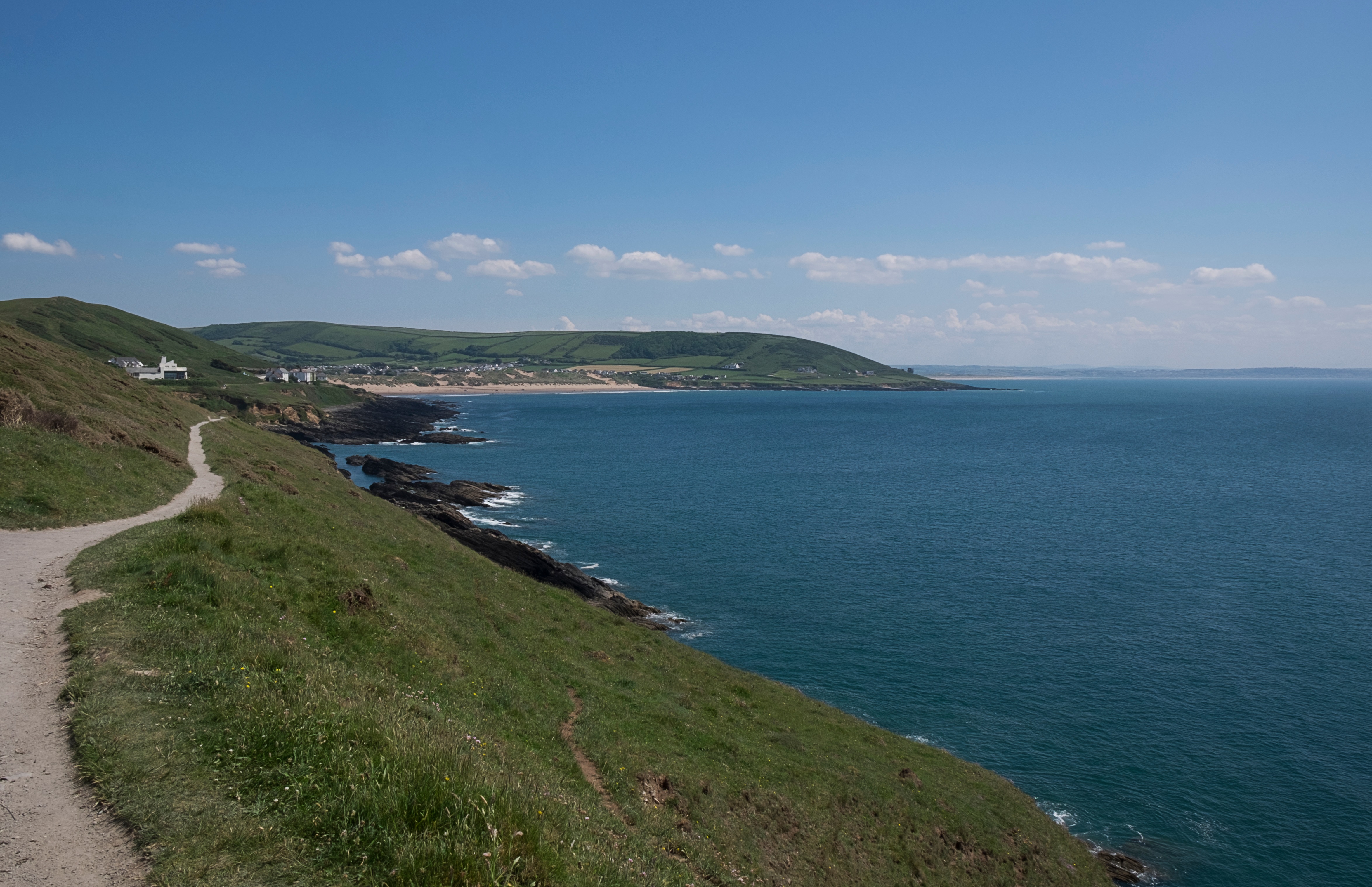
Don’t think you need to tackle the whole thing in one go, though. There are a number of excellent sections of the trail so you can do the whole thing in parts, section by section, or just do the ones which most suit the kind of walking you like to do.
If you’d like to uncover some UK history whilst enjoying a self-guided walking holiday you can view all of the options here. Alternatively, please feel free to contact us by calling 017687 72335 or email us [email protected]